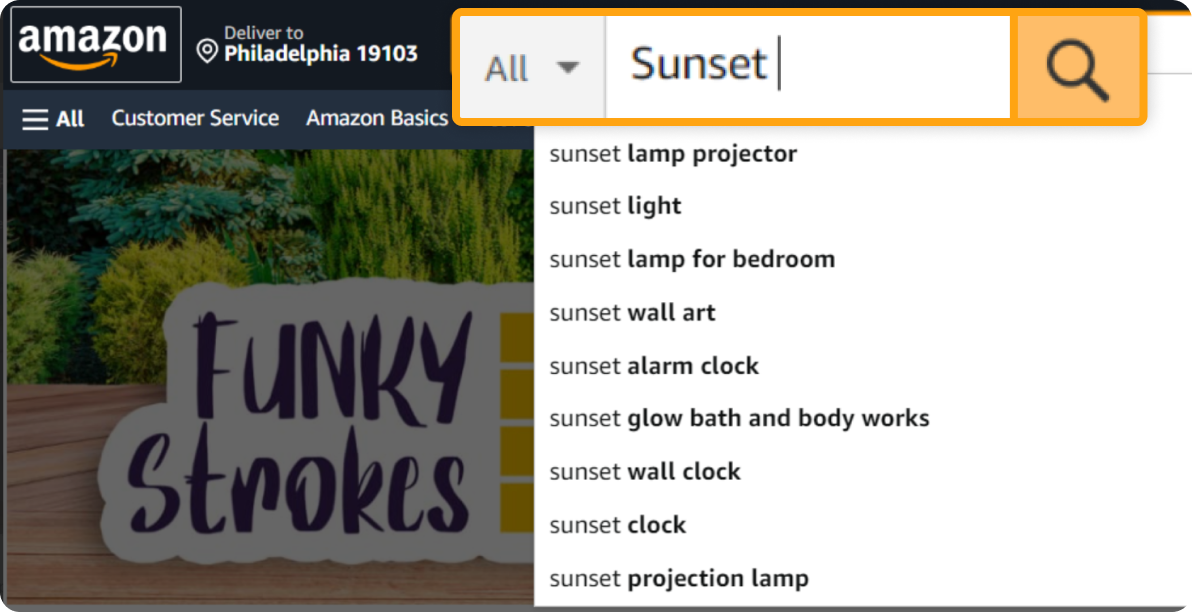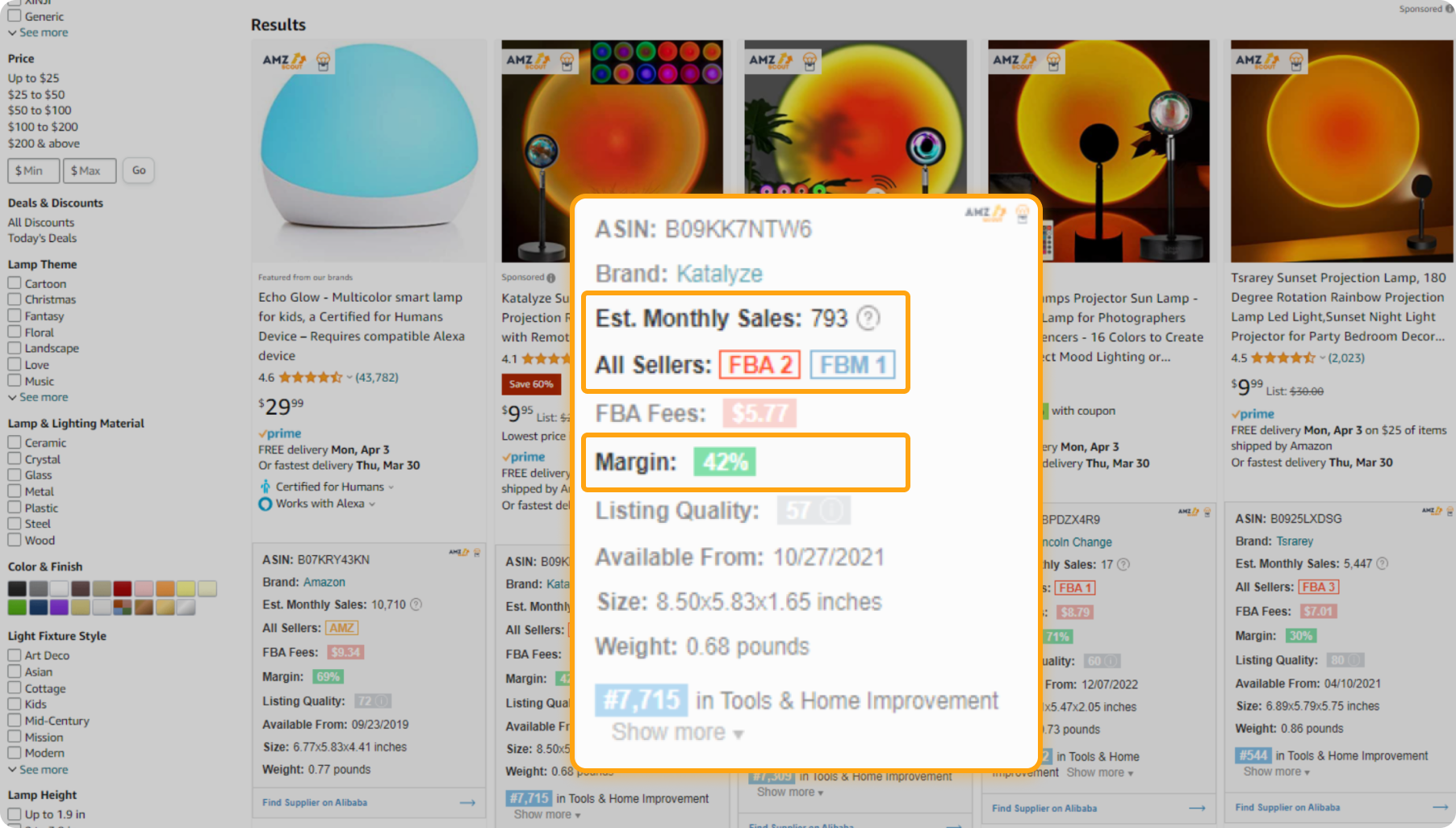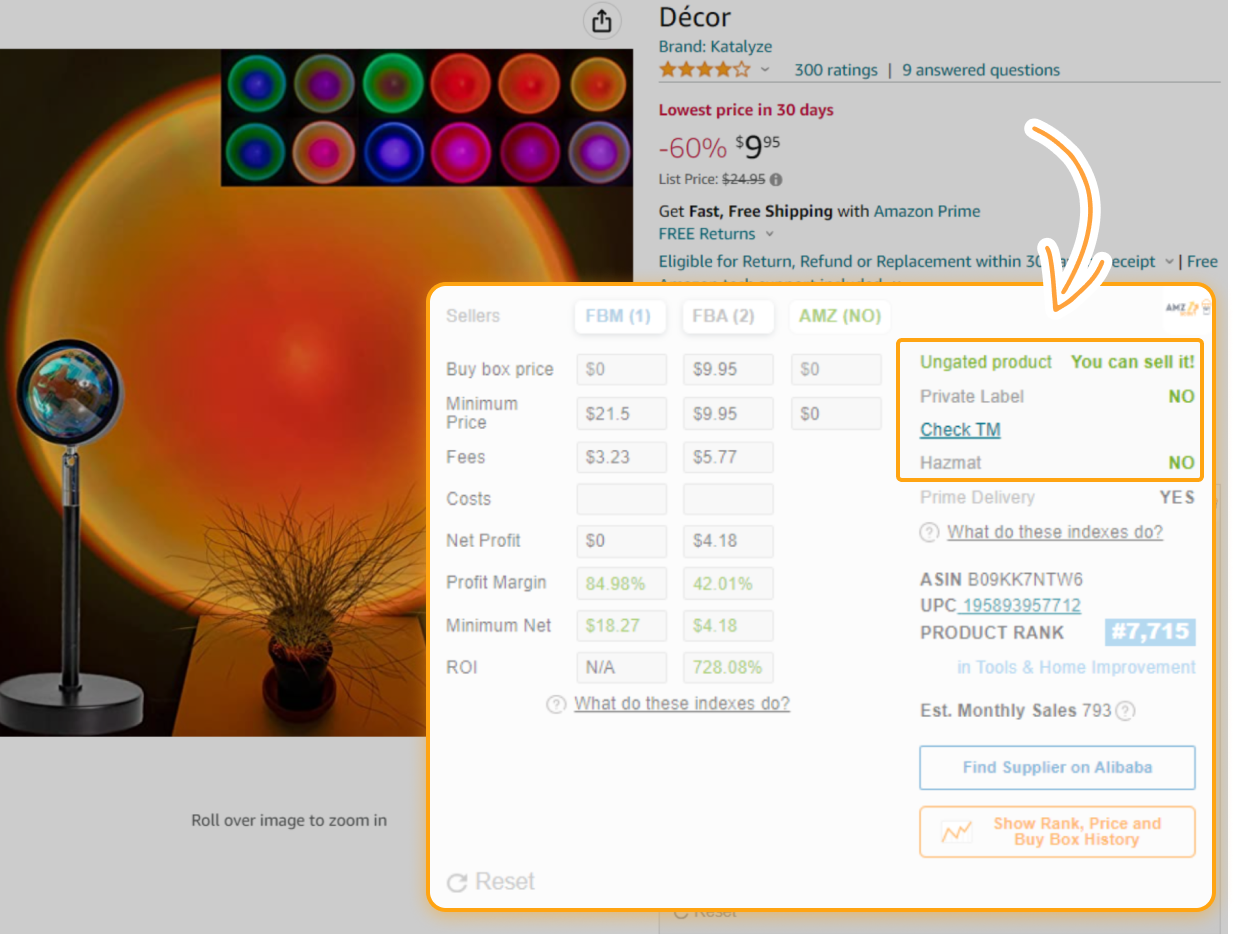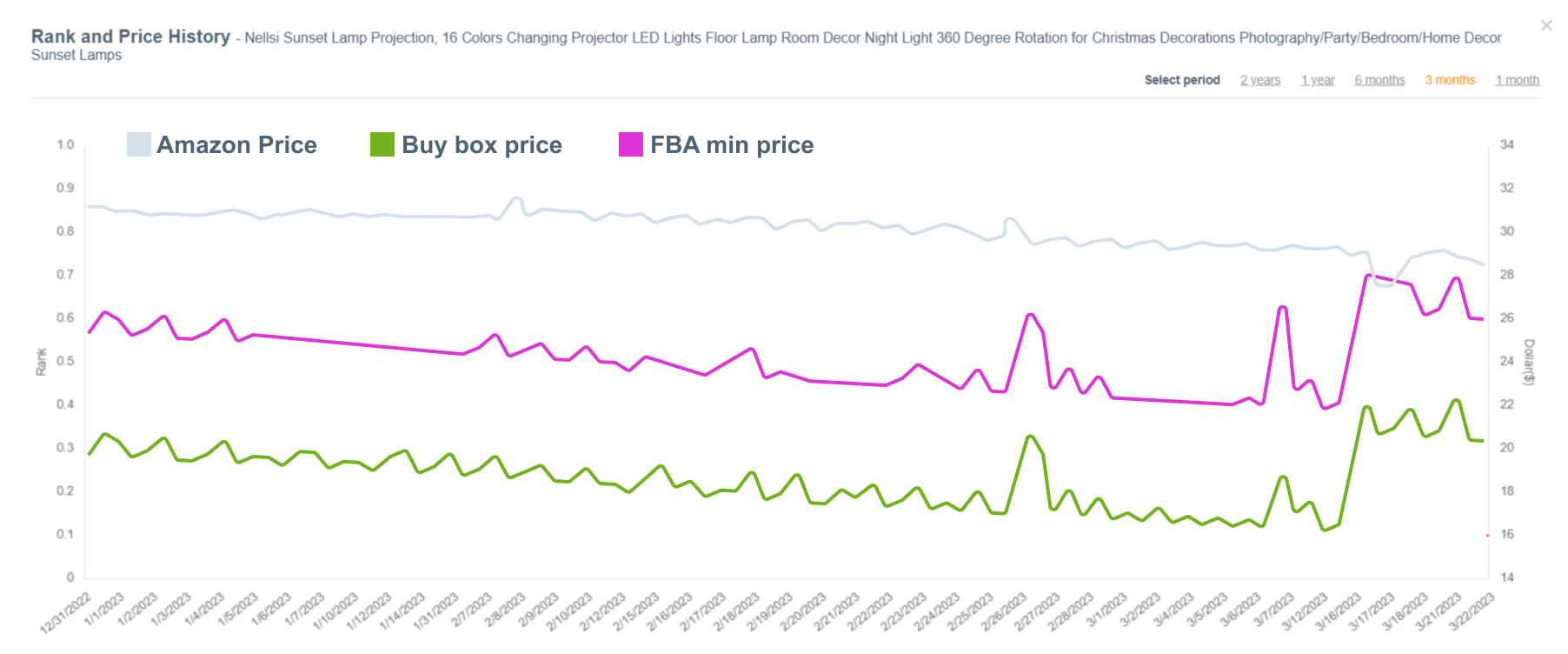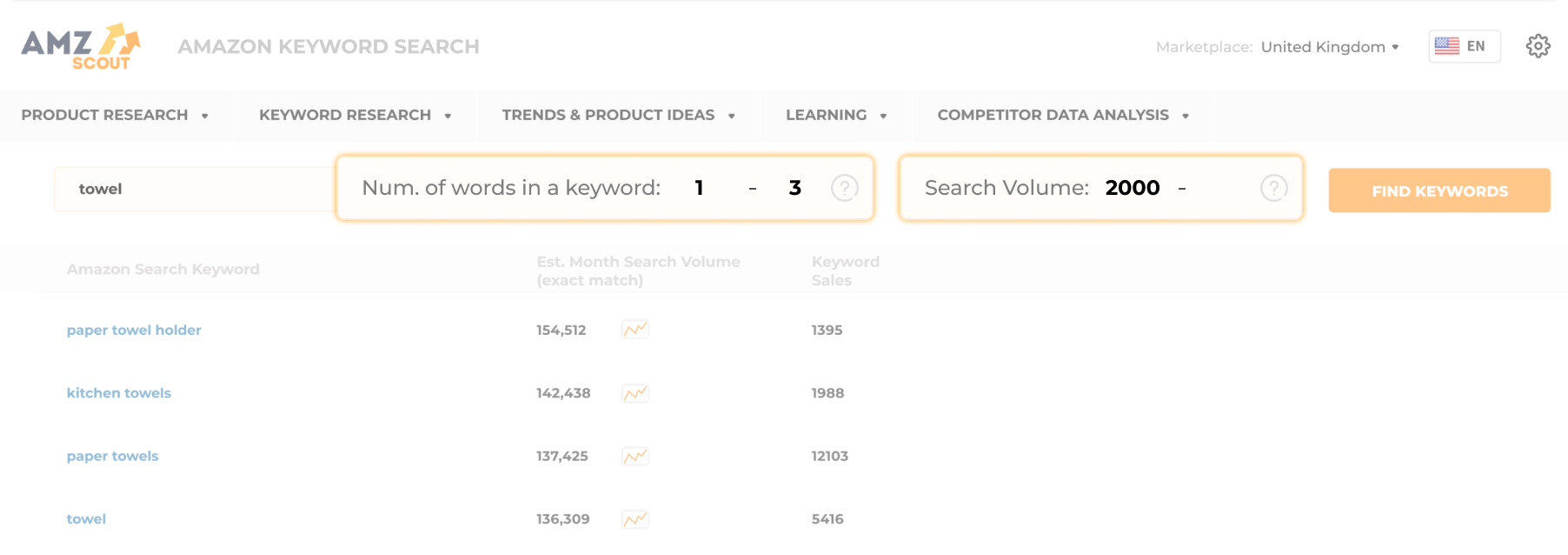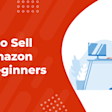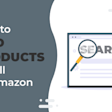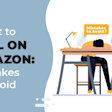
Amazon FBA Wholesale: The Complete Step-by-Step Guide
Are you looking to build an Amazon business that’s scalable and highly profitable? Have you experimented with other models, like retail arbitrage, and are looking to take your business to the next level? Then you’re probably ready to become an Amazon wholesale seller.
So, how do you start a wholesale business? Read our complete guide to learn everything you need to know.
Table of contents
How Amazon FBA Wholesale Works
So, what is wholesale selling? It’s when you sell branded products that you source directly from authorized suppliers (also known as wholesalers). This requires buying products in larger quantities, which means you’ll need a bigger budget. However, your per-item price will be much less than if you bought your inventory from a retail store. This means there’s potential for higher profits.
Wholesale provides a great way to get into online sales. If you’re interested in learning how to become an Amazon reseller, follow these steps.
How to Start a Wholesale Business on Amazon - Step-By-Step
Wholesale selling might seem intimidating at first, but it’s actually fairly easy to get started. Follow the steps below to learn how to sell wholesale goods on Amazon.
1. Do Your Product Research
Whether you decide to sell books or clothing, your first step is to decide which wholesale products to sell on Amazon. It may be tempting to simply pick items that you think are cool or interesting, but if you really want to be successful, you need to make decisions based on factual data.
As a wholesale seller, there are two ways you can go about finding new products:
Research the items offered by your supplier to see which ones are most profitable.
Search Amazon to find the most profitable products, then find suppliers that offer those items.
Whether you begin your search with or without a supplier in mind, conducting thorough product research is crucial. Fortunately, there are some great tools available to assist you with finding the best products to sell.
Amazon Wholesale Product Research Tools
To streamline the time-consuming process of finding an ideal product, you can start with the Amazon Dropshipping, Arbitrage, and Wholesale Extension.
Here is how it works:
Step 1: Install the extension. You can add the plugin through this link.
Step 2: Start your free trial. You do not need to enter your payment details.
Step 3: Browse Amazon to find product ideas. Start by opening Amazon.com to search for a niche.
Your search may include:
Products from wholesale suppliers
Niches you are interested in (anything from electronics to cute gift bags)
Products trending on other marketplaces (offline or online)
Step 4: Prioritize your product ideas. Scroll through Amazon search results while checking the data underneath each product. The Online Arbitrage and Dropshipping extension will show you:
Margins (pay special attention to margins above 50%)
Amazon fees you need to pay to sell this product (or while using FBA)
Seller types (if Amazon sells this product, you will have high competition and few chances to win the Buy Box. Pay attention to products that have a combination of FBA and FBM sellers)
Using the tips above, you can mark priority products and look at each of them more closely.
Step 5: Check the TOP products from your list. Each Amazon product page will have a built-in window with important information about the product. Check for private label, ungated, and hazmat products. You can find out more about these product aspects below.
Step 6: Review the historical data of the product. After checking your product criteria in the app and narrowing down your list of products, check Price History and Buy Box History. Looking at price fluctuations can help you develop the best repricing strategy. Whether you’re selling t-shirts or guitars, repricing can help you remain competitive.
Step 7: Find out how much potential profit it offers. The on-page calculator enables you to enter your costs. Your costs will depend on your business model and may include:
Shipping costs (provided by your supplier or shipping provider)
Advertising costs (from Amazon PPC bids for your target keywords)
Other (tools, subscription, etc.)
The app quickly calculates your sales margins with this data. You’ll see new numbers in the Profit Margin, Minimum Net, and ROI fields. These numbers determine how profitable the product will be.
By following the steps above, you’ll be well on your way to finding profitable products. Having a list of products worth considering enables you to make more effective business decisions.
Finding and Evaluating Product Ideas
If you don’t have a specific product in mind, start with the AMZScout Product Database, which includes data on over 600 million items. You can narrow down results by applying filters such as your desired revenue, number of competitors, price range, and more. The tool also highlights newly added and trending products so you can spot fresh opportunities.
Next, use the AMZScout PRO AI Extension to dive deeper into product analysis. This tool helps you verify whether the product aligns with your business model and goals. The AI features quickly summarize the product’s pros and cons, estimate profitability, and even suggest improvements, making it an ideal tool if you’re planning to launch your own brand.
Once you identify a promising product, search for suppliers by entering the product name + "wholesale" on Google. This will help you discover potential partners, which we’ll cover in more detail in the next step.
What Else to Look for When Analyzing a Product
Understanding which factors determine how easy it is to resell the product will determine your next steps. Use AMZScout’s Online Arbitrage and Dropshipping Extension to check these important criteria:
If the product is a Private Label. This means it is sold by only one merchant who has a brand registry. Typically, you cannot source private label products. You also can’t resell products Amazon directly provides (like a Fire TV Stick).
If the product is in a gated category or it has hazardous materials (hazmat). Reselling these products will require additional certificates or extra approvals from Amazon, often driving up effort or costs.
By following the steps above, you’ll be well on your way to finding profitable products. Having a list of products worth considering enables you to make more effective business decisions.
If you don’t have a specific product or supplier, you can use the AMZScout Product Database. This powerful tool contains data on 600+ millions of Amazon products, giving you a comprehensive view of what’s available on the marketplace. Narrowing down your needs by specific product criteria can help you find items with the highest potential for success.
The database features a variety of search filters, including sales, reviews, price, and weight, allowing you to refine your search to focus only on products with the most profit potential. You can also explore new or trending products that have been gaining popularity over the last few months. With access to such a vast collection of product data, the AMZScout Product Database makes it easier to identify profitable opportunities and make informed decisions when selecting products to sell on Amazon.
To take your research even further, the AMZScout PRO AI Extension allows you to narrow down your list of potential products using additional, critical data points. With this tool, you can analyze niches and competitors in real time, leveraging up-to-date Amazon sales data to make smarter, faster decisions about which products to focus on.
2. Register for an Amazon Seller Account
If you haven’t already, you can now create your Amazon Seller Account. To do so, go to this page. As a wholesaler, you’ll need to apply for a professional account, which costs $39.99/month. Professional accounts get access to advanced tools and reports you need to compete and work as a wholesaler. Don’t bother with an individual account, as those are better for personal use.
To sign up, choose your preferred option and follow the on-screen instructions. You’ll need a form of government ID, a credit card, and your tax information to complete the process.
3. Find Suppliers
Once you know what you want to sell, you’ll need to find a wholesale supplier who can provide you with that product.
Conducting a Google search is a free and easy method, although it can be time-consuming. Enter the name of the brand you’re interested in, followed by “authorized supplier/distributor” to find supplier websites.
You can also use wholesale directory sites. Some of the most popular ones are:
4WholesaleUSA
Top Ten Wholesale
ToyDirectory
Greatrep.com
A lot of Amazon sellers use Alibaba to find suppliers. While this site is a great resource, you won’t find brand-name products here. Alibaba is best suited for retailers who want to create their own private label items.
Contact a few different suppliers to see what their minimum order quantities are and what type of price they can offer you. Most wholesalers are willing to negotiate, so don’t be afraid to counteroffer and try to get the best deal possible.
4. Communicating with Brands
Big brands tend to be protective of their products, so, you may have to prove that you can be an asset to them before they let you sell their goods. Here are a few tips to help you effectively reach out to wholesale suppliers:
Get noticed. In order to get noticed, you need to be professional and have a plan. You can prove your professionalism by presenting yourself as a business. This means you should have a website, a professional email address, and a business plan showing the wholesaler how you plan to promote their products.
Offer value to the brand. Show the distributor how your skills can add more value to their brand. You can do this by offering advertisement improvements and showing your past experience growing other brands. You can also show how reliable you are by showcasing your number of on-time deliveries and customer reviews.
Negotiate for the best deal. Talk with the distributor to get the best deal. The quality of your past wholesale experience is your best tool here. You can also offer to purchase more goods at a greater discount, ask for a higher quantity price, and have the supplier prep and ship merchandise to Amazon for you.
You might have to try many times, as it can be difficult to get approval from some brands, but don’t let that discourage you. Start with a smaller test order, and if that goes well move on to bigger orders.
5. Add Your Product to Amazon
After you receive your inventory from your supplier, it’s time to list your product on Amazon. Go to your Seller Central account and under “Inventory”, click “Add a Product”. Then you’ll be able to search for your item by name or ASIN number.
In most cases, your product will already be listed on Amazon. If this is the case it will show up in the search results. Simply select it from the list and you’ll be added to the existing listing for that item.
If your product isn’t already listed on Amazon, then you’ll need to create a new listing. Be sure to use high-quality images. Your supplier might be able to supply you with some photos you can use. You’ll also want to do some keyword research by using tools like AMZScout’s Keyword Search and Reverse ASIN Lookup. Identify which keywords people use most frequently to search for your item and include them throughout your description.
6. Fulfill Orders and Manage Your Inventory
After you start getting sales you’ll need to stay on top of them to ensure that your customers receive their orders in a timely fashion. To make things easier you may want to consider using the Fulfilment by Amazon (FBA) program.
An FBA wholesale business works by shipping all of your inventory to Amazon, and they store it for you in one of their warehouses. Then, when someone places an order, they’ll ship the product to the customer. There are some added fees that you’ll have to pay for these services, but the convenience is more than worth it. There are also some added perks, such as:
Your items qualify for Prime shipping.
Amazon will handle all customer service related to shipping.
You don’t have to worry about order fulfillment, so can just focus on managing your business.
As you’re selling products, be sure to keep an eye on your inventory. Running out of inventory means you’ll be unable to make any sales. It also hurts your Amazon rankings, so don’t let that happen. It’s important to order more items well in advance to ensure that your new shipment arrives before you sell out.
Benefits of Selling Wholesale
Why should you start wholesaling on Amazon? Below, you’ll find some compelling advantages of this sales model to consider for your business:
High Probability of Sales: There’s high demand for name-brand products, so your chances of generating sales are very strong.
More Profitable: Because you’re buying in bulk, your per-item price is much lower. That means you’ll make more on every sale, which leads to more profits overall.
Automation: If you decide you use FBA, your whole business can be mostly automated. Your wholesaler will prepare your inventory and send it to Amazon, who will store it and ship it to customers each time you make a sale. This leads to a more hands-off kind of business.
Less Competition: There’s more work involved in getting approved to sell established brands. Not many people are willing to go through the process, so if you get approved you’ll be up against fewer sellers.
Pitfalls of Amazon Wholesale Selling
If you want to start an Amazon wholesale business, you need to be aware of potential pitfalls. Below, we’ll go through some of the negative things to keep in mind when reselling wholesale goods on Amazon.
You’ll need a bigger budget. Wholesale suppliers generally have minimum order quantities that are quite high. This means your initial investment will be larger, so you’ll need to have some money saved up.
More risk. Because you’re spending more, you’re also taking on more risk. If you buy a bunch of inventory that doesn’t sell, you could potentially lose money.
It can be difficult to get approved. It takes time to find suppliers, negotiate with them, and get approved to sell their products. Although, once this is done, this type of business is very manageable.
There are rules to follow. Brands often have their own rules/conditions/terms that you need to follow in order to sell their products. This can include rules on pricing, advertising, etc.
There are potential setbacks to all business models. So, while these might seem a bit daunting, they shouldn’t be a reason to abandon the option of wholesale completely. Instead, use this knowledge to overcome wholesale’s natural hurdles.

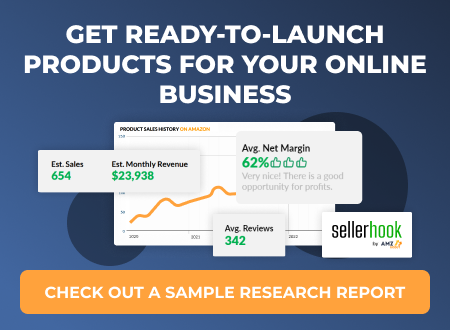
What’s The Difference Between Wholesale Selling and Other Strategies?
There are a number of differences when it comes to wholesale selling vs. other strategies (like retail arbitrage, online arbitrage, private label etc.):
Buying in Bulk. When you buy from wholesalers, you purchase lots of products at once, often in high enough quantities to fill entire pallets. While this can lead to higher upfront costs, it also means you won’t run out of inventory as quickly, which is a plus.
Dealing with Brands. With retail arbitrage and online arbitrage, you deal with local retailers and online marketplaces. But in order to build a wholesale business, you need to find and negotiate with suppliers which will be a new experience for most people.
Product Research. There’s more product research involved in wholesale selling. Because you have more choice, you want to choose the most profitable products. You also need to factor in the cost of shipping from your supplier, so you need to find items that are small and light.
No Customization. Compared to private label selling, the one difference is that you can’t customize your product. Instead, you’re selling established items that are most likely already listed on Amazon.
Tips to Help You Make More Money with Wholesale Selling
We’ve provided you with all of the information you need to get your Amazon wholesale business started. Here are a few more tips to help maximize your profits:
Try other selling methods first. If you’re new to selling on Amazon, consider trying retail or online arbitrage first. These methods require a smaller budget, so there’s less risk. This will allow you to learn about Amazon selling before making a larger investment.
Always do proper product research and analysis. This point can’t be emphasized enough. The best sellers don’t find profitable products by chance. They do in-depth research to discover items with the highest potential, based on loads of data. Use tools like the AMZScout PRO Extension to analyze any item you’re thinking about selling, and look at sales, reviews, margins, and competition levels to make smart decisions.
Use Amazon ads. Consider using Amazon ads to drive more traffic to your product listings. Target the right keywords by utilizing AMZScout’s Keyword Search and Reverse ASIN Lookup tools.
Take a course. Find and register for courses taught by real Amazon wholesale sellers.
Most importantly, never stop learning, and continue trying new strategies to ensure your business is always optimized.
Conclusion
Amazon wholesale selling is a great way to build a profitable eCommerce business. Follow the steps listed above, and use AMZScout’s tools, to find the right products and get your business started.
FAQs
How much money do I need to start wholesale on Amazon?
You can technically begin with a few hundred dollars, but for a meaningful wholesale operation on Amazon you’ll want about $2,000 to $5,000 to cover inventory, seller fees, shipping and tools.
Is Amazon wholesale profitable in 2025?
Yes, wholesale on Amazon remains profitable in 2025 for sellers who pick the right products and manage margins smartly. Typical profit margins run around 10-20%, though outcomes vary based on cost, category and competition.
Do I need a business license to do wholesale on Amazon?
Amazon doesn’t require a business license to open a seller account, but many wholesale suppliers and brands will ask for one, along with a sales tax permit, to approve your reselling business.
